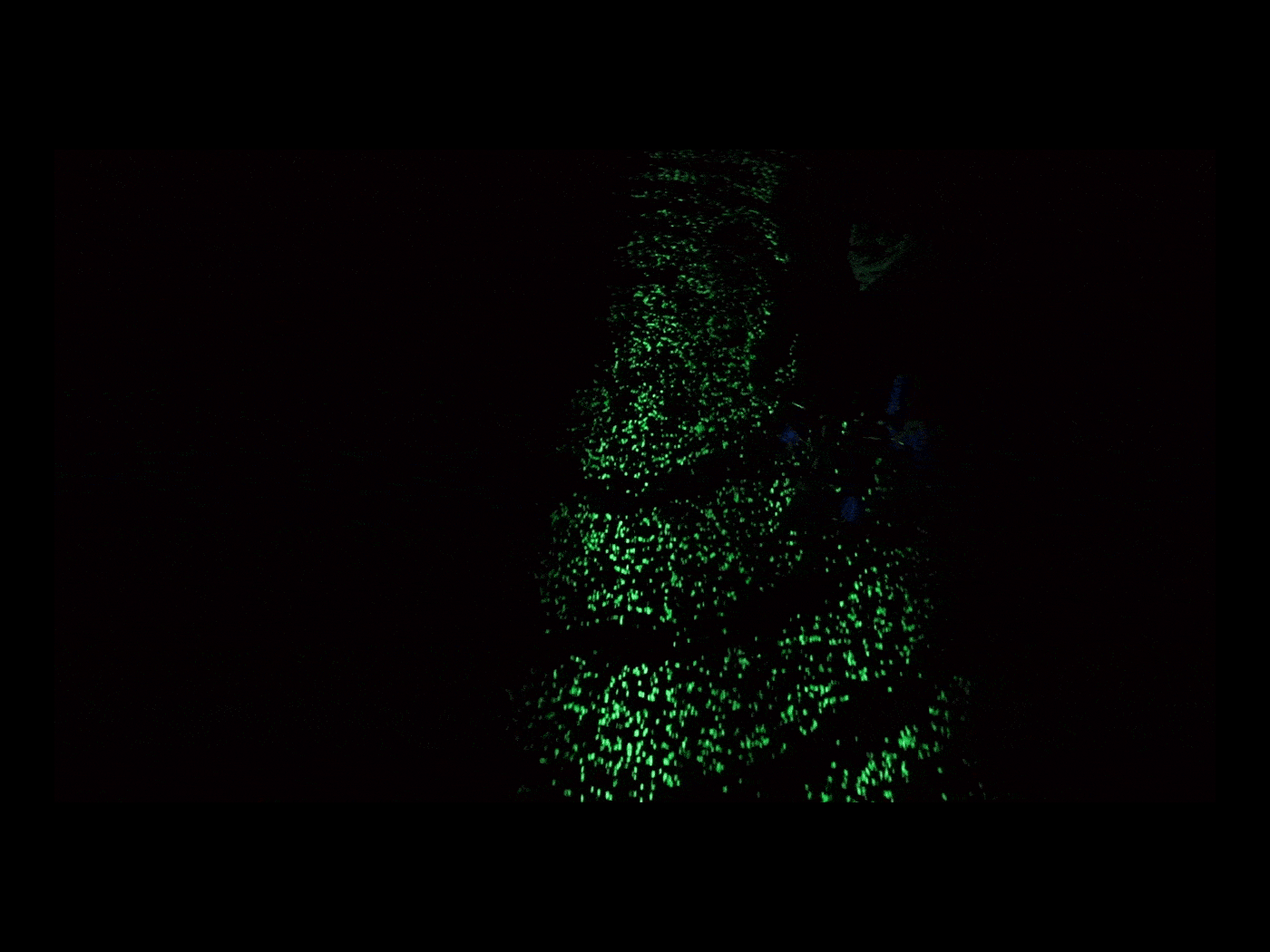Innovations
The Return of America's Celebrity Inventor
In a new book, Smithsonian historian Eric S. Hintz traces the rise and fall, and rise again, of the maverick inventor
With Falcon-Like Claws, This Aerial Drone Can Land, Grip and Perch on Branches
The quadrocopter was also able to catch objects tossed by researchers, such as bean bags and tennis balls
Scientists Unveiled the World's First Living Robots Last Year. Now, They Can Reproduce
By clustering free-floating stem cells together, 'xenobots' can assemble baby bots
Inside the Innovative Lab Growing Mammal Tissue Using Plants as Scaffolds
Researchers at the University of Ottawa have used apple flesh to create human tissue in the shape of an ear and asparagus stalks to regenerate spinal cords
At New 'Futures' Show, Big Dreamers and Changemakers Activate a Better Way Forward
Smithsonian’s 175th anniversary exposition opens with big-name speakers, family fun and a 21st-century peek into the world ahead
The Quest to Shoot an Arrow Farther Than Anyone Has Before
In dogged pursuit of an exotic world record, an engineer heads to the desert with archery equipment you can't get at a sporting goods store
Will Glow-in-the-Dark Materials Someday Light Our Cities?
Substances that persistently luminesce could be used in streets, sidewalks and buildings
This New Tool Lets You See Floods From Around the World, Dating Back to 1985
An innovative interactive map could aid future disaster planning, especially for vulnerable countries in the developing world
Pfizer Asks FDA to Expand Booster Eligibility to All Adults
Experts are optimistic the request will be granted before the winter holiday season
Heinz Debuts 'Marz Edition' Ketchup Made With Tomatoes Grown in Mars-Like Conditions
Scientists grew the tomatoes under the same temperature and water levels found on the surface of the Red Planet
Pfizer Says Covid-19 Pill Cuts Hospitalization and Death Risk by Nearly 90 Percent
Though vaccines are still the best line of defense against the virus, the antiviral drug could help high-risk Americans once symptoms appear
Could Skin Patches Be the Future of Covid Vaccines?
The device might survive longer storage times and pose a better option for people afraid of needles
This New Installation Pulled 20,000 Pounds of Plastic From the Great Pacific Garbage Patch
The trash collection device dubbed 'Jenny' could help address overwhelming marine plastic pollution
Merck Asks FDA to Authorize Promising Covid-19 Pill
If approved, the antiviral drug could be a game-changer in the fight against the virus
Five Things to Know About NASA's Lunar Rover 'VIPER'
The device will hunt for resources, including water, vital to future space exploration
'Saildrone' Captures First-Ever Video From Inside a Category 4 Hurricane
This uncrewed, remote-controlled vessel gathered valuable scientific data that could help researchers better understand and predict these violent storms
X-Ray Technology Reveals Marie Antoinette's Censored Secret Correspondence
A combination of the chemical analysis and advanced data processing used could reveal many more lost writings or drawings
Researchers Potty Trained Young Cows, a Promising Measure to Reduce Greenhouse Gases
One cow pees up to eight gallons a day; training them is easy, and capturing and treating the waste could make a difference
Bruce the Parrot Uses Tools to Survive Despite a Broken Beak
Missing his upper beak, an alpine parrot in New Zealand uses small pebbles for preening
Can Birds Tip Us Off to Natural Disasters?
Researchers think birds can hear hurricanes and tsunamis—a sense they’re hoping to tap into to develop a bird-based early warning system
Page 10 of 28
:focal(1500x1000:1501x1001)/https://tf-cmsv2-smithsonianmag-media.s3.amazonaws.com/filer_public/95/3c/953c2543-6bfb-4877-8a87-99bc062b04de/gettyimages-1232778165.jpg)
:focal(750x500:751x501)/https://tf-cmsv2-smithsonianmag-media.s3.amazonaws.com/filer_public/0c/7f/0c7fee43-d4c0-41eb-b1fe-87e3e9c1cf93/branch2_frontrightview_dl0_3422.jpeg)
:focal(400x267:401x268)/https://tf-cmsv2-smithsonianmag-media.s3.amazonaws.com/filer_public/99/03/9903cce2-00af-41f5-a4b9-005793089c82/121_robots.jpeg)
:focal(800x602:801x603)/https://tf-cmsv2-smithsonianmag-media.s3.amazonaws.com/filer_public/39/94/3994366e-52de-47c7-9f86-f2cb6a6bd3e7/andrew_pelling_with_ear_photo_by_saxx_web.jpg)
:focal(1500x1057:1501x1058)/https://tf-cmsv2-smithsonianmag-media.s3.amazonaws.com/filer_public/32/70/32707dcc-12a7-4233-9cc9-9b408184a5b4/futures-installation-view-smithsonian-arts-industries-building-courtesy-ron-blunt.jpg)
:focal(1394x1047:1395x1048)/https://tf-cmsv2-smithsonianmag-media.s3.amazonaws.com/filer_public/21/5d/215d750e-67aa-4857-987d-c1089c44a8f3/dec2021_g11_archery.jpg)

:focal(1943x1600:1944x1601)/https://tf-cmsv2-smithsonianmag-media.s3.amazonaws.com/filer_public/a6/10/a6109e31-c311-442c-8cf2-77ce49f24c53/gettyimages-1234224468.jpg)
:focal(3976x2651:3977x2652)/https://tf-cmsv2-smithsonianmag-media.s3.amazonaws.com/filer_public/74/dd/74dde8cd-f698-4124-bbe3-9e74dfb0ac15/gettyimages-1301956320.jpg)
:focal(1614x929:1615x930)/https://tf-cmsv2-smithsonianmag-media.s3.amazonaws.com/filer_public/95/df/95df52b8-a985-45f7-8437-d83600e27579/gettyimages-467496314.jpg)
:focal(1899x1272:1900x1273)/https://tf-cmsv2-smithsonianmag-media.s3.amazonaws.com/filer_public/01/33/013316f9-313c-4ab1-9ae1-f02abe979d87/gettyimages-1235943902.jpg)
:focal(800x602:801x603)/https://tf-cmsv2-smithsonianmag-media.s3.amazonaws.com/filer_public/7d/51/7d51ff79-1859-45d3-bd22-03782528cba8/mg_8163_web.jpg)
:focal(2596x1730:2597x1731)/https://tf-cmsv2-smithsonianmag-media.s3.amazonaws.com/filer_public/97/cc/97ccbf0c-080c-4801-9939-3c127f7d9223/210824-drone-morning-inspection-photos-dvdk-17.jpeg)
:focal(1772x1071:1773x1072)/https://tf-cmsv2-smithsonianmag-media.s3.amazonaws.com/filer_public/a6/73/a6735d8a-cd21-4011-b68a-f5b5c6f2f244/gettyimages-1235705476.jpg)
:focal(492x277:493x278)/https://tf-cmsv2-smithsonianmag-media.s3.amazonaws.com/filer_public/42/09/4209dc88-850a-44bf-a47b-03bdbbb1f538/viper_on_moon_vis.jpeg)
:focal(1238x699:1239x700)/https://tf-cmsv2-smithsonianmag-media.s3.amazonaws.com/filer_public/96/c7/96c7db93-f1c5-4f51-835b-84742b47d0b8/screen_shot_2021-10-07_at_44913_pm.png)
:focal(800x602:801x603)/https://tf-cmsv2-smithsonianmag-media.s3.amazonaws.com/filer_public/65/f1/65f1daec-17b0-4d95-963e-3102756d2c78/dsc08396_web.jpg)
:focal(500x333:501x334)/https://tf-cmsv2-smithsonianmag-media.s3.amazonaws.com/filer_public/6a/5f/6a5f60d0-198a-48d1-a9f5-f98d985ca496/1000.jpeg)
:focal(512x288:513x289)/https://tf-cmsv2-smithsonianmag-media.s3.amazonaws.com/filer_public/25/24/252464e5-1c37-489d-9d3b-91724364369e/1631146083345.jpeg)
:focal(792x586:793x587)/https://tf-cmsv2-smithsonianmag-media.s3.amazonaws.com/filer/23/f8/23f8c3cb-0c46-4dc0-b673-c5015abf27a7/img_0641_web.jpg)